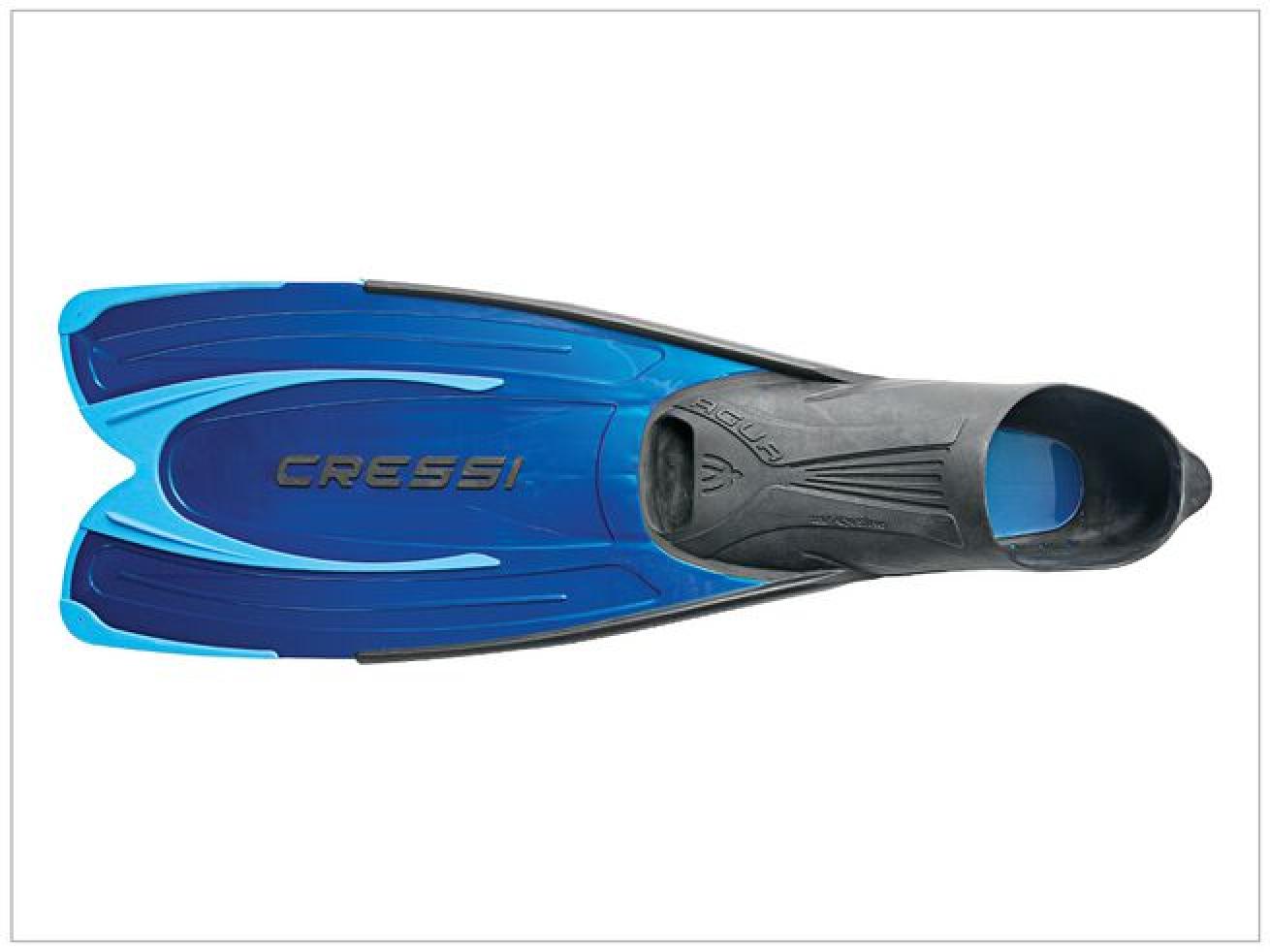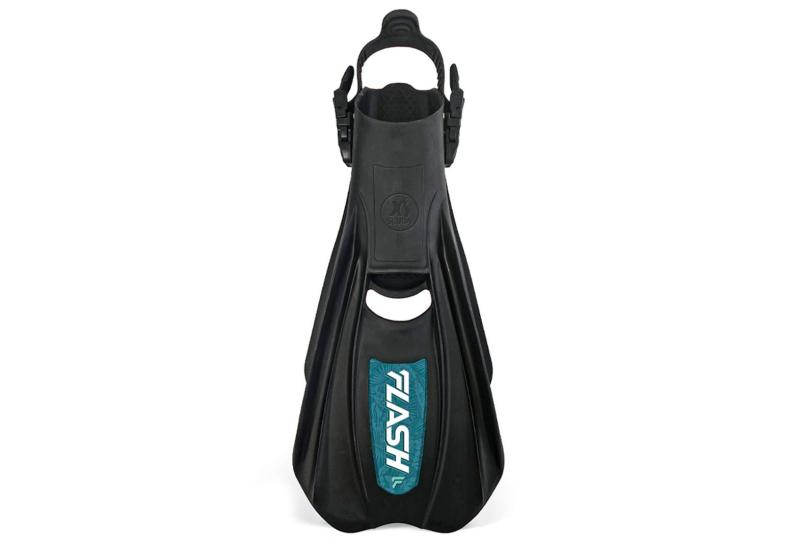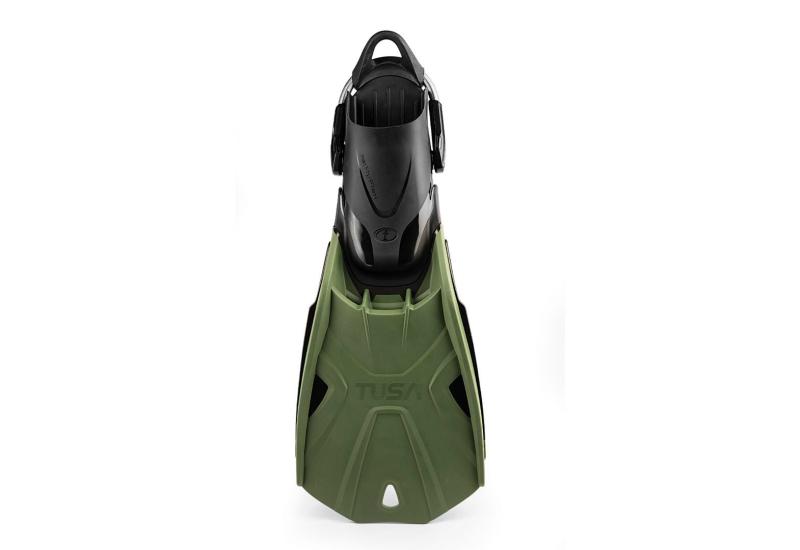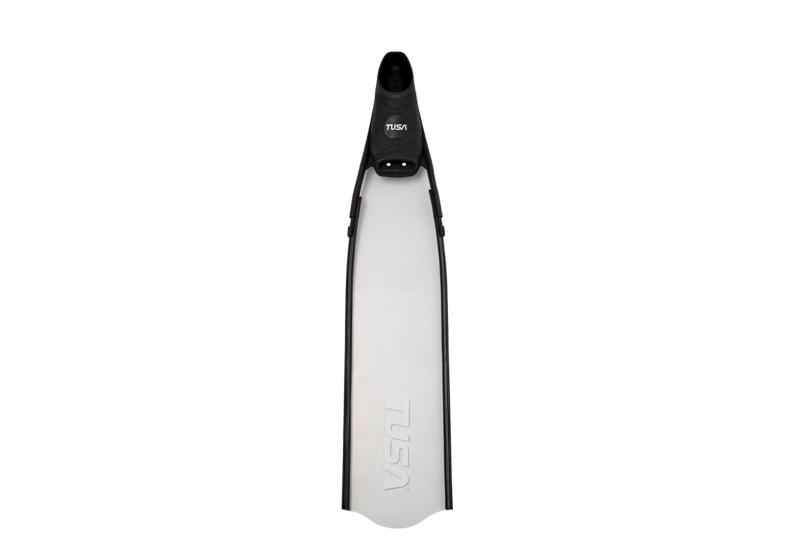What is the Difference Between Full-foot and Open-Heel Scuba Diving Fins?
There are many things to consider when deciding which scuba diving fin type is right for you.

Sport Diver Staff PhotographerCressi Agua Full-Foot Fin
What is a Full-foot Fin?
Full-foot fins have a soft, flexible foot pocket. As their name suggests, the foot pocket encompasses your entire foot. These kinds of fins are often worn barefoot but can also be worn with a thin lycra or neoprene sock for additional comfort and protection.
Related Reading: Best Scuba Regulators of 2024 Reviewed
Pros and Cons of Full-foot Fins
1. Less Stuff — Full-foot fins don’t require the use of neoprene dive booties, so you have one less thing to pack and one less thing to buy.
2. Travel Friendly — Full-foot fins tend to be less beefy than their open-heel counterparts. This makes them well-suited for travel but also translates to less drag in the water and easier kicking on the surface.
3. Direct Contact — The design of a full-foot fin allows the energy from your foot to be directly transferred to the fin.
4. Size Specific —Getting the right size is very important because full-foot fins aren’t adjustable — they either fit or they don’t.
5. Bare Your Sole — Since full-foot fins are worn without booties they don’t offer any exposure protection. During shore dives, your feet will be completely exposed to any hazards between you and the dive site.
6. On and Off — Squeezing in and out of a snug foot pocket may be more of a chore than just tightening or loosening a heel strap.
What is an Open-Heel Fin?
Open-heel fins have larger, stiffer foot pockets and are open at the back to accommodate neoprene dive booties and/or drysuit boots. These kinds of fins are held in place with an adjustable heel strap or bungee.
Pros and Cons
1. Don’t Get Cold Feet — Open-heel fins are worn with booties, which provide additional insulation. Open-heel fins are required for drysuit diving, the large boots will not work with a full-foot fin.
2. Put Your Foot Down — Booties protect your foot from cuts and stings. They provide protection even when you aren’t wearing your fins, so they are beneficial for rocky, hazardous shore entries.
3. Adjust Accordingly — Adjustable heel straps can be loosened and tightened to achieve a great fit — they also make it easier to get the fin on and off. This makes it easy to wear the same fin with booties of varying sizes and thicknesses.
4. Expense — Open-heel fins are generally more expensive than full-foot fins. Especially when you add in the additional cost of a pair of booties.
5. Bulk — Open-heel fins are generally larger and bulkier than full-foot fins. This makes them powerful work-horses underwater, but more difficult to travel with.

TusaTusa Hyflex Switch Open-Heel Fin
So What Kind of Fin Should I Get?
Full-foot fins would be an appropriate choice for divers who frequent warm-water destinations and prefer to dive from boats. They are also well-suited for folks who travel or enjoy snorkeling as much as diving — provided that they purchase actual dive fins, not just snorkel-specific fins that are not suitable for current or moving bulky dive gear underwater.
Divers who visit destinations with cooler water will want to consider open-heel fins. This will allow them to wear neoprene booties appropriate for the dive environment. Booties can also be worn in warm water and can be useful for divers who get cold easily. The added protection is ideal for divers who like to shore dive or have long walks between where they gear up and the dive site. They may be slightly bulkier and more expensive than full-foot fins, but open-heel fins offer greater flexibility and are a good investment for any diver.
Related Reading: Best Scuba BCDs of 2024 Reviewed
But Wait, There’s More!
While not incredibly common, there is a third type of fin that combines the attributes of both full-foot and open-heel fins. These fins look like a typical open-heel fin, but feature smaller, more comfortable foot pockets that are designed to be worn with bare feet instead of booties. By keeping the fin small and removing the need for booties, these hybrid fins provide a travel-friendly alternative to full-foot fins. The bungee straps provide more adjustability, so there is more flexibility with sizing, although typically not as much as you would get with an open-heel fin. Like full-foot fins, they do not provide thermal protection.









